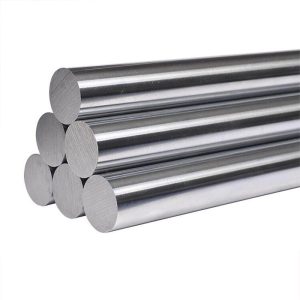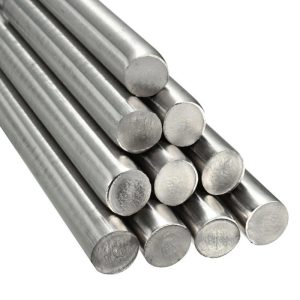Can you bend stainless steel round bar?
03-21-2024
The bending capacity of a stainless steel round bar depends mainly on its material, diameter, length and desired bending radius. There are many types of stainless steel, including austenitic, martensitic, ferritic and duplex stainless steels, and each type has different bending properties.
Bending of stainless steel round rod
Stainless steel round rods can indeed be bent, but some key factors need to be noted to ensure that the bending process is successful and the material is not damaged.
1) Material: The type and grade of stainless steel will affect its bending properties. For example, austenitic stainless steel (such as 304 and 316) has good ductility and toughness, so it is relatively easy to bend. However, martensitic stainless steels (such as 410 and 440) may be more brittle and require more attention to avoid cracking during bending.
2) Diameter and length: Smaller diameters and shorter lengths usually mean easier bending. Larger diameters and longer lengths may require greater force to bend, increasing the risk of cracking.
3) Bending radius: The desired bending radius also affects the difficulty of the bending process. Smaller bending radii require greater force and may increase the risk of material damage.
4) Preheating and annealing: In some cases, preheating stainless steel round rods or annealing them after bending can improve the ductility of the material, making it easier to bend.
5) Bending methods: There are many ways to bend stainless steel round rods, including manual bending, mechanical bending and hydraulic bending. It's important to choose the method that works best for your project.
In order to successfully bend the stainless steel round rod, we need to follow the following steps:
1) Choose the right tool: Use a tool designed for metal bending, such as a pipe bender or bending machine, which can adjust the bending Angle and radius as needed.
2) Preheating treatment: In some cases, especially when dealing with thicker or harder stainless steel, preheating can help the material better adapt to the bending process. Preheating also reduces the stress that may occur during bending.
3) Accurate measurement and marking: Before bending, the desired bending point must be accurately measured and marked. This ensures accuracy and consistency in bending.
4) Gradual bending: Avoid excessive bending at one time, and should be gradually carried out in steps. This helps reduce stress build-up inside the material, thereby preventing breakage.
5) Post-treatment: After bending, the stainless steel round rod may require further processing or treatment to ensure that its surface is smooth, flawless, and meets the requirements of use.
Sum up
In general, although stainless steel round rods can be bent, this needs to take into account many factors, including the type of stainless steel, the diameter of the rod, the desired bending radius, and other factors in the bending process. Therefore, if you intend to bend stainless steel round rods, it is best to conduct some tests or consult a professional first to ensure the success and safety of the operation.








